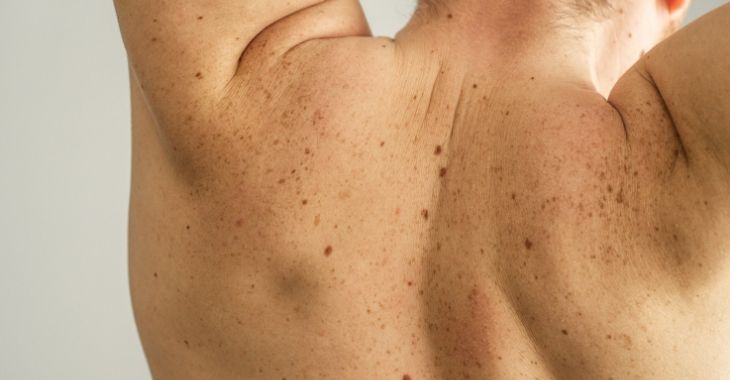When Should You Have a Mole Check?

Everyone can have moles on their body, from tiny moles that look like freckles to larger, raised moles. While these are normal skin formations, when they change in shape, size or color, they can be signs of skin cancer. Mole checks are important for everyone, especially those 30-years of age of older. Moles checks can help detect early signs of skin cancer and can save a life.
Monthly Mole Checks at Home
Adults should be performing monthly mole checks at home. Keeping an eye on moles and changes can help detect skin cancer in the earliest forms. Adults should be watching mole changes, looking for the ABCDs of mole transformation, including:
- Asymmetry. Do both sides of the mole look the same? Changes to one side could be a sign of skin cancer issues.
- Border. Look at the border of the mole – odd or uneven borders could indicate a skin cancer formation.
- Color. Be aware of changes of color in moles. Most normal moles are one, solid color. Melanomas tend to be variations of color.
- Diameter. When a mole grows or becomes wider in size, it is a sign it should be checked. Growing moles could be cancerous.
Monthly checks should be done from head to toe. This is especially important for those who have high sun exposure and those with a history of melanoma in their family.
If there are any suspicious moles on your body, you need to have a professional mole check. A dermatologist can inspect a mole and determine whether a biopsy or removal is needed. Early detection and treatment can stop the spread of cancer, possibly saving your life.
Posted on behalf of:
Kayal Dermatology & Skin Cancer Specialists
141 Lacy Street, Suite 200
Marietta, GA 30060
(770) 426-7177
The information provided on this website, including text, graphics, images, and other materials, is intended solely for informational purposes and should not be used as a substitute for professional medical advice, diagnosis, or treatment.

)